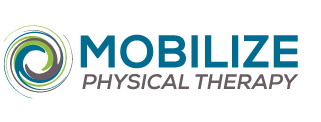Soreness Vs. Pain- The Battle!
There are endless benefits of exercise; staying active supports our physical and mental wellbeing. To gain strength and make physical improvements, our bodies need to be pushed to an appropriate level where gains can occur. That bring said, every person is different -...
Miles for Midwives | Saturday, October 1, 2016
Miles for Midwives 2.5 mile Family-Friendly Fun Run/Walk takes place in the autumn to raise awareness around the benefits of midwifery and the important work of Washington midwives! Your participation helps to ensure that families in Washington State have greater...
Raking Leaves: The Do’s and Dont’s
It's that time of year again - pumpkin spice latte’s, visits to the pumpkin patch, and hoodies galore! It's also time for beautiful fall foliage and raking leaves. Raking leaves can provide good aerobic exercise, but it also can everything from blisters to back pain....
Golf Giving You Pain?
Golf lovers play rain or shine out her in the Pacific Northwest, but regardless of the weather pain can really slow down your golf game. Especially if that pain isn in your lower back. However, there are ways to play safe and smart that will support your game. Our...
The Leaves Are Coming Down! Fall is almost upon us
Raking Leaves: The Do’s and Dont’s It's that time of year again - pumpkin spice latte’s, visits to the pumpkin patch, and hoodies galore! It's also time for beautiful fall foliage and raking leaves. Raking leaves can provide good aerobic exercise, but it also can...
Stress Fractures: A Common Injury Explained
Stressed about Stress Fractures?! A stress fracture is a common injury among runners, and can set back your running schedule by an average of 6 weeks! But what exactly is a stress fracture, and how can it be prevented? Well, never fear were here to answer some...
Keep those fitness goals and stay cool at the same time!
Finding it hard to stay cool while exercising outside in the heat? Here are some helpful reminders to beat the heat while still achieving your workout goals! As we all know when it’s hot outside we want to stay hydrated! This is by far the most important detail when...
Avoiding Chronic Pain
Good physical and mental health can help you keep pain in check. Getting enough sleep, exercising and eating a balanced diet, reducing stress, and taking care of your health problems early can all keep your mind and body alert and active. They all also contribute to...

